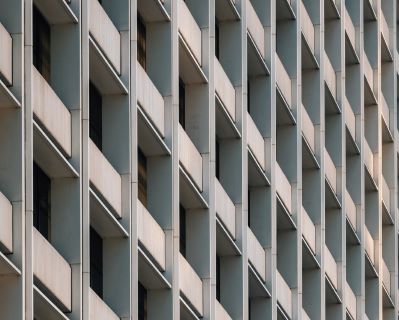Multifunctional self-sensing, self-healing smart concrete is a game changer for the construction industry – By Kerryn Ramsey
It’s light, sustainable, durable, strong and cost-effective. Smart concrete is the way of the future and it’s coming soon. It is produced in many forms including a type that modifies ordinary concrete with the addition of nanotechnology. Other types of smart concrete have functions such as self-monitoring, self-healing, self-heating, carbon capture, and energy storage properties. As concrete is one of the most used materials in the construction industry, the impact of this new technology will bring huge benefits in efficiency, strength, cost and sustainability.
Scientia Associate Professor Wengui Li, an Australian Research Council (ARC) Future Fellow, works at the School of Civil and Environmental Engineering in the University of New South Wales in Sydney. He’s undertaking cutting-edge research in the fields of smart concrete and sustainable construction materials.
“The greatest advantage of smart concrete lies in its multifunctionality, such as self-sensing, self-healing and electromagnetic shielding capabilities,” says A/Prof Li. “It enables infrastructure to integrate these functionalities without the need for additional equipment such as sensors. This enhances structural coherence. These functionalities not only drive the development of smart concrete but also form the foundational basis for the development of smart cities.”
SELF-HEALING
Cracks in concrete have always been a problem. The nature of concrete means that it loses water as it hardens and shrinks. Cracking can happen due to a number of factors including excess water in the mix, the speed of drying, stresses exceeding strength, expansion and shrinkage.
Smart concrete can be designed to heal hairline cracks within a couple of weeks of them appearing. This is achieved by adding a crystalline mixture to the mix and working it throughout the concrete as a whole.
“When small cracks develop due to shrinkage, thermal expansion, or minor mechanical stress, the crystalline mixture will be exposed to air,” explains A/Prof Li. “Water is crucial for the healing process, whether it comes from moisture in the air or is intentionally added later. The water enters the cracks and reacts with the crystalline additives. This reaction forms new crystalline structures to fill the cracks. This material is similar to compounds that make up hardened cement paste. The effectiveness of the self-healing depends on the crack width, ideally within 0.2 mm. In narrower cracks, the space is more conducive to the rapid formation and bridging of the crystalline structures.”
UNDER STRESS
Smart concrete can also be used to measure and monitor early damage at a microscopic level. Piezoresistivity is the changes in electrical resistance in response to mechanical stress or strain. Using this quality in smart concrete allows for data to be collected when pressure or weight is applied, changing its electrical resistance of the concrete.
“When pressure or weight is applied to the concrete, the internal structure undergoes slight deformations which changes the electrical resistance,” says A/Prof Li. “Instead of embedding sensors, we developed a novel concrete with excellent piezoresistivity. When cracks begin to form within the concrete, even if they are microscopic, they alter the pathways of electrical current flow. This results in a measurable change in the electrical resistance, and we can collect the signal as an indicator. As the electrical resistance of a concrete-based sensor is repeatable in an elastic regime, it also makes it a stress sensor.”

GREENER CONCEPT
Smart concrete is sustainable as it heavily reduces fossil fuel use in cement production. It uses alternative binders such as industrial byproducts like fly ash, slag and silica fume. This not only reduces the reliance on energy-consuming cement but also helps in recycling waste materials.
“Using nanomaterials improves the mechanical properties and durability of concrete,” says A/Prof Li. “This means less cement is required to achieve the same performance. Smart concrete can self-monitor and self-heal which increases its lifespan and reduces the frequency of repairs and replacements.”
There is also a form called geopolymer concrete that does away with cement, instead using industrial byproducts, such as fly ash from coal combustion and slag from iron production. This is combined with alkaline activators to generate the binder. Compared to cement concrete, it has many benefits.
“Geopolymer concrete generates lower carbon emissions because it does not rely on Portland cement, which is highly energy-consuming to produce and a major source of CO2 emissions,” says A/Prof Li. “Geopolymer concrete has superior durability and resistance to chemical attacks, making it suitable for harsh environments. It’s fire-resistant without significant loss of strength after higher temperature treatment. It achieves a high early strength, which is beneficial for projects requiring short construction time.”
FUTURE CONCRETE
There are many benefits to smart concrete and the construction industry is starting to embrace its use. Where traditional concrete is heavy and prone to cracking, smart concrete requires less volume, self-heals and gives early warning of any issues. It’s a new technology that’s constantly evolving new production methods.
“Smart concrete allows for efficient resource management,” says A/Prof Li. “There is reduced need for frequent repairs and it contributes to sustainability goals by lowering overall environmental impact. The future opportunities of this product in the construction industry are very exciting.”





